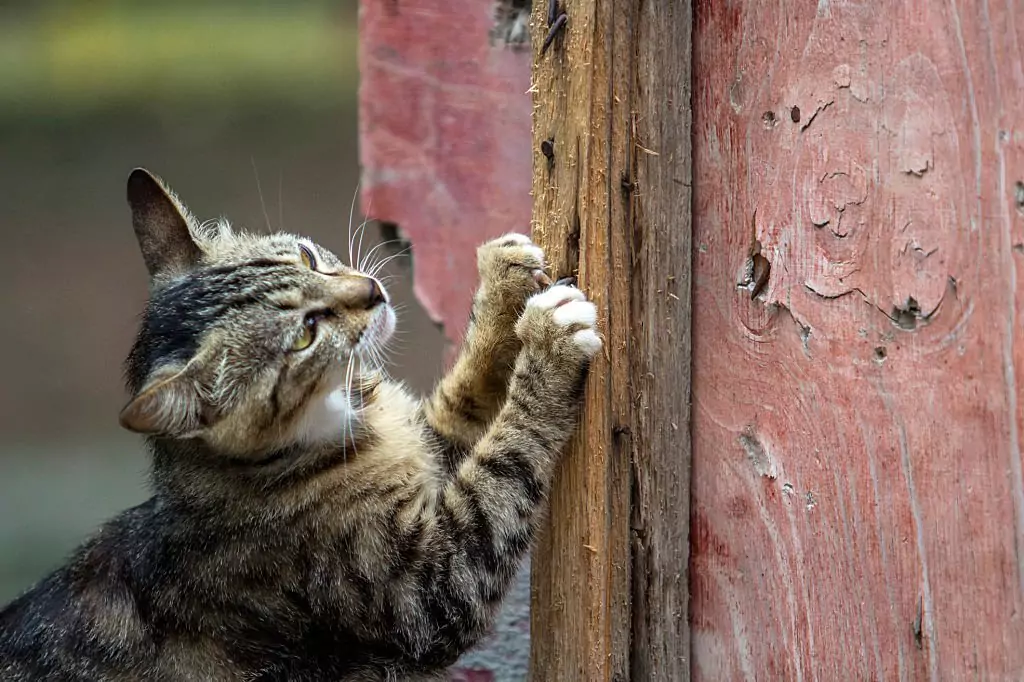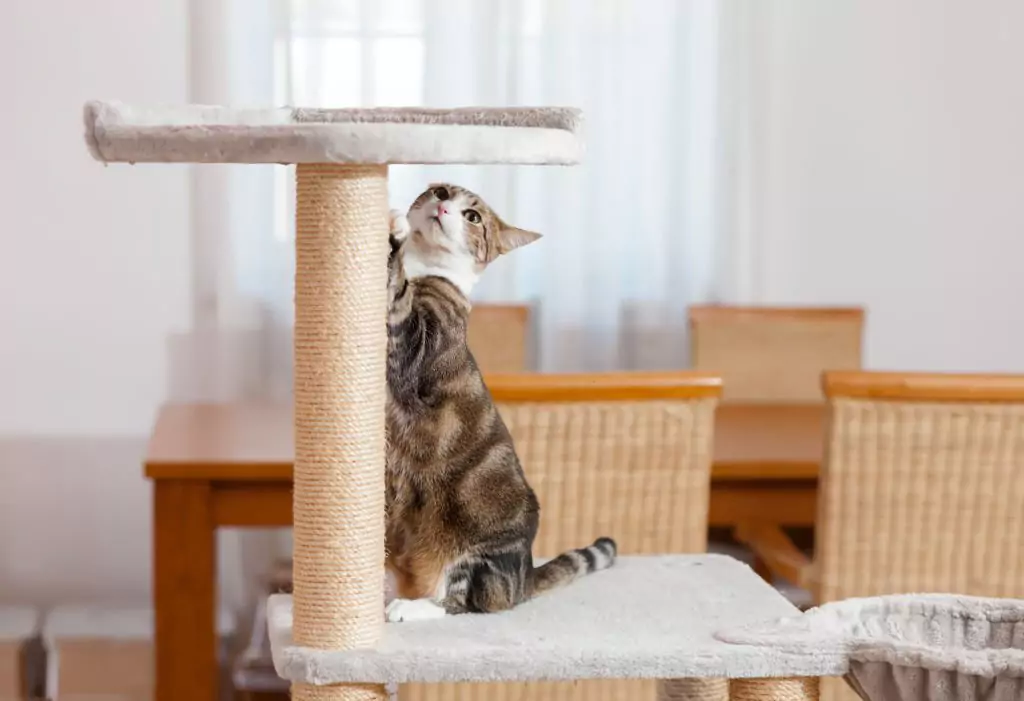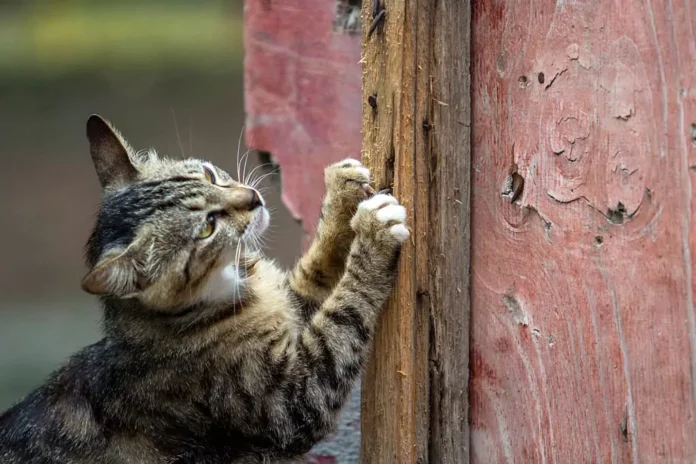Introduction
Cats are wonderful pets that bring joy and companionship to their owners. However, one common problem that cat owners face is their cats scratching at doors. This behavior can be frustrating and destructive, but it is important to address it for the well-being of the cat and the peace of mind of the owner.

Understanding why cats scratch at doors
Scratching is a natural instinct for cats. They use it to mark their territory, stretch their muscles, and sharpen their claws. Cats may specifically target doors because they are often made of materials that are appealing to scratch, such as wood or carpet. Additionally, doors may represent a barrier that the cat wants to get through, so scratching at them may be a way to communicate their desire to go to the other side.
Providing alternative scratching surfaces for your cat
One way to address scratching behavior is to provide appropriate scratching surfaces for your cat. Scratching posts and pads made of materials like sisal rope or cardboard can be great options. It is important to place these surfaces in areas that are easily accessible to the cat and where they spend a lot of time. Additionally, it may be helpful to have multiple scratching surfaces throughout the house.

Using deterrents to discourage scratching behavior
Another way to address scratching behavior is to use deterrents. Double-sided tape or aluminum foil can be placed on the door to make it less appealing to scratch. Citrus scents can also be used as cats tend to dislike the smell. It is important to be consistent in using deterrents and to avoid punishing the cat for scratching behavior.
Training your cat to stop scratching at doors
Training can be an effective way to address scratching behavior. Positive reinforcement, such as treats or praise, can be used to reward the cat for using appropriate scratching surfaces. Redirecting the cat’s behavior by gently moving them to a scratching post can also be helpful. It is important to be patient and consistent in training.
Providing mental and physical stimulation for your cat
Providing enrichment for your cat can also help prevent destructive behavior. Toys, such as puzzle feeders or interactive toys, can provide mental stimulation. Playtime and exercise can provide physical stimulation. It is important to provide a variety of enrichment options and to rotate them regularly to keep the cat engaged.
Using positive reinforcement to encourage good behavior
Positive reinforcement can be used not only in training but also in encouraging good behavior. When the cat uses appropriate scratching surfaces, they should be praised and rewarded. This can help reinforce the desired behavior and make it more likely to occur in the future.
Addressing any underlying medical issues that may be causing scratching behavior
It is important to rule out any underlying medical issues that may be causing scratching behavior. Skin conditions or pain can cause cats to scratch excessively. If scratching behavior persists despite other interventions, it may be necessary to seek veterinary care.
Creating a comfortable and secure environment for your cat
Creating a comfortable and secure environment for your cat can also help prevent destructive behavior. Providing hiding spots, comfortable bedding, and access to food and water can help reduce stress. Additionally, addressing any environmental stressors, such as loud noises or other pets, can help prevent scratching behavior.
Seeking professional help from a veterinarian or animal behaviorist
If scratching behavior persists despite other interventions, it may be necessary to seek professional help from a veterinarian or animal behaviorist. These professionals can provide additional guidance and support in addressing behavior issues.
Consistency and patience in stopping your cat from scratching at doors
Consistency and patience are key in addressing scratching behavior. It may take time and effort to train your cat and provide appropriate enrichment, but it is important to remain consistent and patient. With time and effort, it is possible to address scratching behavior and create a happy and healthy environment for your cat.
Conclusion
Scratching behavior can be frustrating for cat owners, but it is important to address it for the well-being of the cat and the peace of mind of the owner. Providing appropriate scratching surfaces, using deterrents, training, providing enrichment, and seeking professional help if necessary are all ways to address scratching behavior. With consistency and patience, it is possible to create a happy and healthy environment for your cat.



